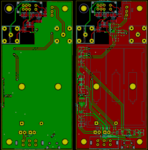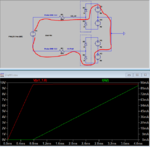Swend
Full Member level 4

- Joined
- May 14, 2019
- Messages
- 237
- Helped
- 10
- Reputation
- 20
- Reaction score
- 9
- Trophy points
- 18
- Location
- Roskilde, Denmark
- Activity points
- 2,304
I'd say the opposite: If they don't have a common reference then there is nothing preventing them from having a common mode potential difference.
Yes there is, it's called a dielectric, in the case of the diff-probe it is the 4-6Mohm input impedance of the amplifier. But I agree it's very easy to make a sock-up (replace the 's' with a 'c') and generate smoke, therefore I will put a warning on the diff-probe "Think twice, measure once".
And if they're not galvancially isolated but you call them 'floating' that implies they do have a common mode potential difference.
Then we are discussing semantics and not electronics. For future ref. when I say "isolated" or "floating" I mean "galvancially isolated".
Your circuit can't measure a signal that has greater than ~9V between your differential scope probe ground and the oscilliscope ground.
I'm ready to believe you, but you did not present any scientific founded argument/theory/law/convention to support your claim.
In my mind that's hardly a good differential probe and you havn't made a convincing case that this is actually ok in your application. Particularly given that you want to measure high voltages.
If you are right that I can't, then you are also right about the above.
in relation to your scope ground (which is your differential probe circuit ground too).
A-ha, maybe we have something here we can clarify mutually. Can you point out on my schematic where the scope probe ground ("ground" as in a reference, not the planet's ground/earth) is connected to U1 ground? Because I can't see it?




